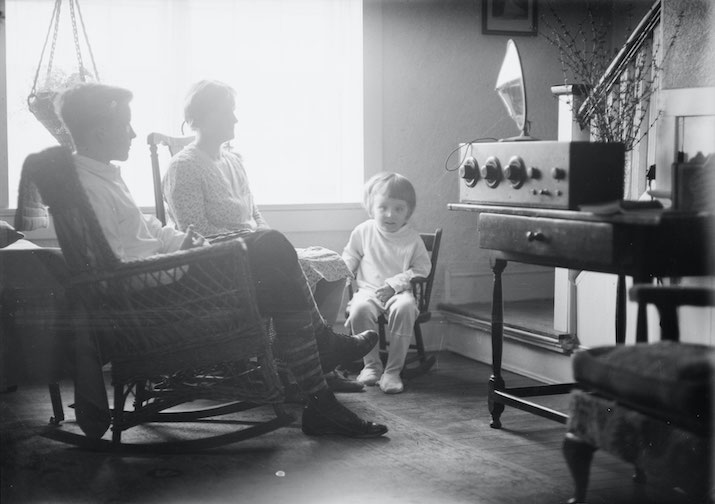Authorized by the FCC 60 Years Ago, FM Stereo Is Increasingly Home to Sports Talk
The format’s higher sonic quality was aimed at music broadcasting in the 1960s
Story Highlights
Sixty years ago the FCC authorized FM stereo and while it was originally targeted to music broadcasting, it continues to see sports-talk broadcasts migrate to the band.
The FCC cleared the way for the frequency-modulation stereo broadcast standard in April 1961 after two years of field testing, specifying its launch at midnight local time on June 1 that year. WGFM Cheboygan, MI, was first on, followed an hour later by EFM Chicago, and two hours later by KMLA Los Angeles. Today, there are more than 10,000 FM radio stations broadcasting in the U.S.
The FM format was aimed at music broadcasting and was pivotal in the tectonic shift from the singles-oriented AM format that launched rock ’n’ roll to the LP-heavy formats that laid the foundations for the rock revolution.
But sports and sports-talk radio weren’t far behind and continue to shift to the FM band, especially as music itself migrates toward streaming, and sports increasingly incorporate music. Following the success of Detroit’s WYXT-FM “97.1 The Ticket,” which is home to Tigers, Red Wings, Lions, and Pistons games and, in 2009, became the only sports-talk radio station to be the highest-rated station in its market, networks doubled down on FM. For instance, CBS Radio established sports radio stations on the FM dial in Dallas (105.3 The Fan); Boston (98.5 The Sports Hub); Pittsburgh (93.7 The Fan); Washington, DC (106.7 The Fan); Baltimore (105.7 The Fan); and Cleveland (92.3 The Fan), in addition to simulcasting Philadelphia‘s heritage 610 WIP on the former WYSP.
Other notable outlets include Clear Channel’s KFAN Minneapolis, Greater Media’s WPEN Pennsylvania, and Dispatch Media’s WBNS-FM Columbus, OH.
“The huge improvement in audio quality is the main advantage FM offers sports and sports talk,” says Jay Tyler, director, sales, Wheatstone, where he has designed radio studios for broadcasters Dan Patrick and WBZ FM/Sports Hub Boston. “There’s also the fact that you can do stereo on FM as well.”
Tyler also cites FM’s ability to generate subcarrier HD channels, subdividing their data stream into subchannels HD1, HD2, H3, and so on, similarly to the way digital subchannels function through multiplexed broadcasting on DTV. Their audio quality is somewhat lower than pure FM stations’ but are plenty useful for sports talk. In March 2009, CBS Radio inaugurated the first station with an HD4 subchannel, carrying sports station WJFK-FM Washington, DC, as well as sister sports operations WJZ-FM Baltimore, WTEL and WIP Philadelphia, and WFAN New York.
According to Ben Blevins, senior director, broadcast technologies, Learfield IMG College, a sports-marketing company representing more than 200 of the nation’s top collegiate properties, including the NCAA and its 89 championships, FM enables the RDS/HD Radio Experience, which allows inclusion of visual information, such as scores and stats, with the audio broadcast.
“Things we know how to easily do in the digital space and can over-deliver to our terrestrial FM partners,” he says of delivering that kind of data along with sponsor/call-to-action items to affiliates. “Better audio quality along with supplemental content creates a better user experience.”
Frequency modulation relies on subtle changes in the frequency of the RF signal to translate the code that a radio receiver then translates into sound; the amplitude-modulation (AM) format encodes the sound according to changes in the strength, or amplitude, of the signal. Frequency modulation does a more accurate job of re-creating the original sound, and the nature of FM’s waves mean that the program isn’t interrupted when the receiver passes beneath large objects, such as when cars and their radios drive under bridges or in tunnels.
The technology dates back to 1933, when engineer Edwin Armstrong invented frequency modulation, about three decades after AM became the standard of the nascent broadcast technology.
In fact, commercial radio itself is just past its own century mark (Nov. 2, 1920 marked the first such radio broadcast), around the same time that the automobile entered its mass-market phase with Henry Ford’s Model-T. That nexus eventually put riders and listeners together in the same place, ensuring that 93% of Americans experience some radio every week, according to Nielsen.
FM just made it sound better.

